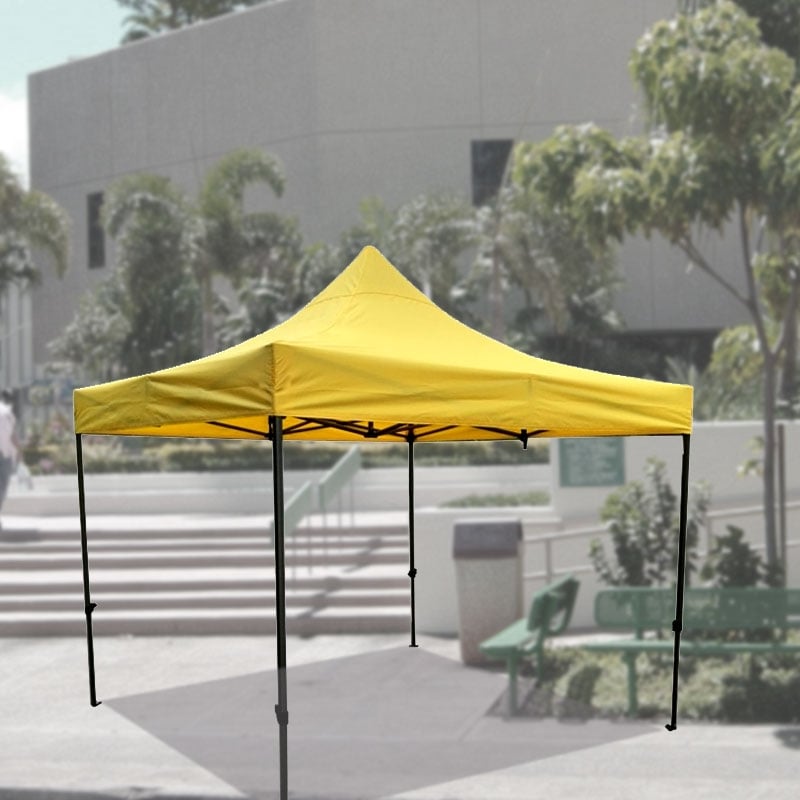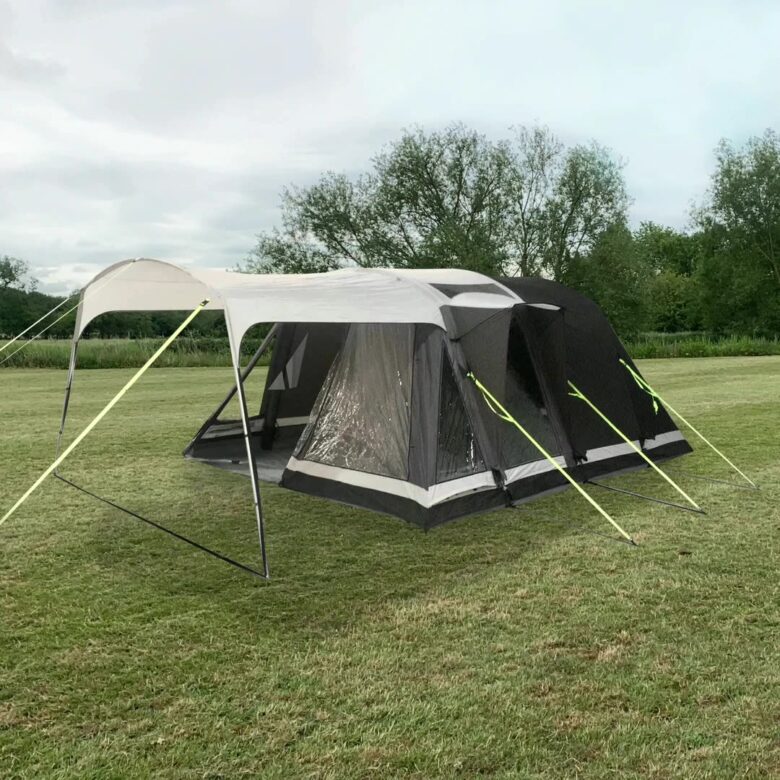Nothing serves better as a temporary shelter solution than the outdoor tent. This ubiquitous accessory can be seen everywhere from camp-sites to sporting venues. So, what makes it so special? Let’s understand.
Contents
1. Features, Advantages and Benefits of the Outdoor Tent
Any product relies on its features, advantages and benefits for it to be a hit among consumers. The same goes true for outdoor tents. Over time tent manufacturers have perfected the art of making tents that exude versatility. Let’s have a look at the features, advantages and benefits of a modern outdoor tent.
| Feature | Advantage | Benefit |
| Outdoor tents block UV radiations and rain. | This means you are safe under its shade. | If the weather seems welcoming, you can indulge in some outdoor fun without having to worry about sunburns or untimely rain. There’s always the tent to give you shelter when you need it. |
| Modern heavy duty pop up canopy tents are made from lightweight materials | This means they can be transported anywhere you want. | Modern outdoor tents live up to their categorisation as temporary shelter solutions. You can carry them anywhere, and install them yourself without a fuss. |
| Custom printed pop up tents are easy to customise. | Modern custom tent manufacturers like Extreme Canopy offer a host of tailoring services to their clients. From tent colour and graphics to shape and size, you can have almost all the features of your tent tailored to your taste. | If you are a brand owner, you can have your very own branded tent manufactured to serve as your pavilion in tradeshows. This really helps when you want to reach out to a large section of the population and convert them into customers. |
| Modern outdoor tents are made from materials that are durable, yet cost-effective. | This keeps the production costs low and the end products turn out to be affordable and incredibly long lasting. | A penny saved is a penny earned! The money you save in the long run by investing in outdoor tents, can be put to good use when needed. |
Now that we have had a look at the features, advantages and benefits of the outdoor canopy tent, let’s take a close look at the materials that go into manufacturing one.

Source: abovealladvertising.net
2. Materials
We did mention that materials used to manufacture modern outdoor tents are lightweight, durable, and cost-effective. Let’s take a closer look at them and how they compare with each other.
2.1 The Canopy
Let’s focus on the canopy first. After all, that’s the part that provides you all the shade from UV radiations and rain! Since the ancient times up until the last century, canvas was the material to manufacture tent canopies. Make no mistake; it is still in use. But these days PVC and polyester have taken over from canvas as the most sought after materials, and there’s good reason to that. Why is it that most tent manufacturers now prefer PVC or polyester? And, how do these materials compare? Let’s take a close look.
| PVC | Polyester | |
| Blocks UV | Yes | Yes |
| Waterproof | Yes | Yes |
| Fire retardant | PVC can be made fire-retardant by introducing certain additives while manufacturing. | Polyurethane or PU coated Polyester doesn’t catch fire easily. For all intents and purposes, it can be treated as being fire retardant. |
| Customisable | Yes. You can print anything on PVC canopies and render it in any colour you want. | Yes. You can manufacture PVC sheets in whatever colours and design patterns you want |
| Lightweight | Yes | Yes |
| Easy to carry | Yes. PVC is slightly heavier than Polyester and less easy to fold. But it is certainly lightweight. | Yes. In fact, Polyester folds better than PVC. |
A word on PU coating:
PU or polyurethane is a modern invention. This compound is extremely versatile and can be moulded into shapes or applied as coats on different surfaces. When applied as coats, it lends the underlying material more structural integrity, increased waterproofing capabilities and fire resistance. For example, PU-coated polyester carries all the benefits of a polyester sheet plus those that come with PU. Isn’t that fascinating?
2.2 The Frame
The tent gets its structural strength and rigidity from its frame. And, when it comes to tent frame manufacturing, modern materials of choice are steel and aluminium. How do they compare? Let’s take a close look.
| Aluminium | Steel | |
| Corrosion resistance | Naturally corrosion resistant. | Can be powder coated to make corrosion resistant |
| Strength & Durability | While aluminium is not as strong as steel, extruded aluminium is strong enough for most practical applications. Hence, it’s used quite often by tent manufacturers. | Steel is strong! No question about it! |
| Weight | This is the area where aluminium shines. It is super-light! This is why this metal finds application in lightweight frame construction. No wonder, tent makers love aluminium. | Modern steel alloys may not be as light as aluminium alloys, but they aren’t unwieldly by any means. |
3. What to buy and where to buy from?
The online marketplace is bristling with tent manufacturers selling outdoor canopy tents of all varieties and qualities. We understand it can get a bit debilitating to buyers, especially for firs time buyers. So, we decided to make life easy for them! Our testers went ahead and checked out some of the offerings in the market. And here’s what they liked.
Our testers came back genuinely impressed by the X5, X6, X7 and Q8 range of instant canopy tents from Extreme Canopy. What makes them so special?
- They employ PVC or PU-coated polyester canopies. This makes them super-durable, UV and waterproof, and easy to customise. You can ask Extreme Canopy to print what you want on your canopy or order your tent in your preferred shades. They will be happy to oblige!
- The framework is either made of extruded aluminium or steel. We have already seen why both materials are excellent for tent manufacturing.
- Both frame and canopy come with warranties to safeguard you as a client.

Source: alibaba.com
Conclusion
It’s your money after all. Hence, buying decisions rest entirely upon you. But remember, spending judiciously is key to keeping a business up and running. While investing in a product, think of its long-term benefits. Is it going to be cost-effective in the long run? Will it prove to be worth every dollar you spend on it in a couple of years’ time? These are the questions to ask yourself. Take this article as a guide and rely on your instincts to purchase the best accessories for your business.
